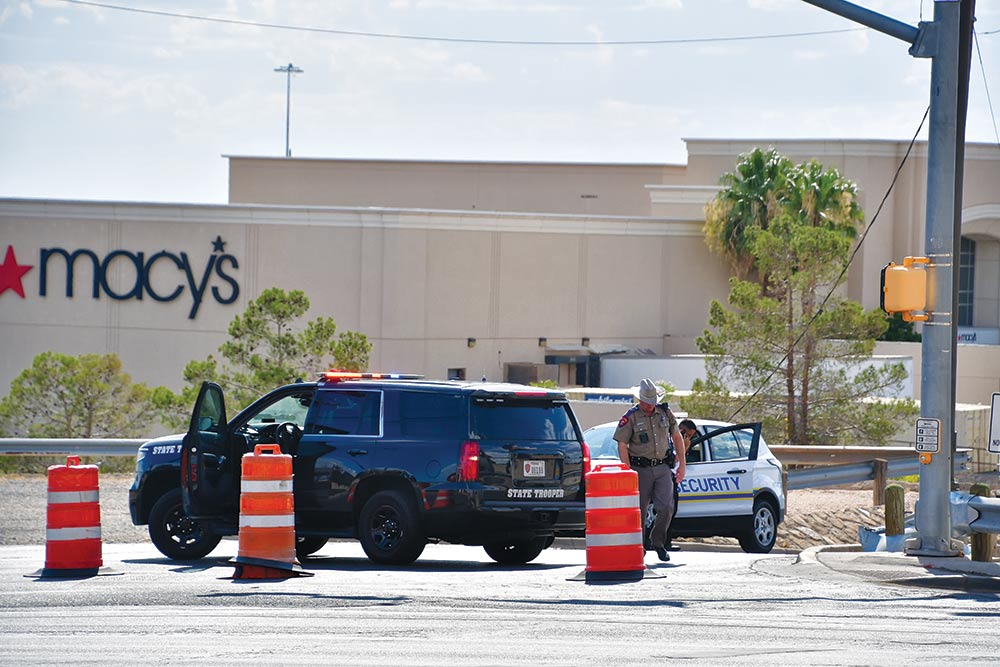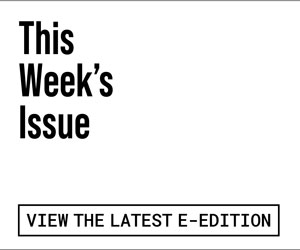“We have been feeling the brunt of this administration—the brunt of the constant criminalization of immigrants, since 2015,” says Danielle Walker. She’s the spokesperson at San Rafael’s Canal Alliance, the local immigrant services nonprofit that’s seen an influx of immigrants, mostly traumatized women and children who’ve been released from detention centers to await their fate as asylum seekers.
They come to San Rafael because they either have family or have some other connection to the Canal District neighborhood. Now, says Walker, there’s an additional level of fear that communities such as San Rafael with big immigrant populations are becoming the targets of right-wing terrorists.
In the aftermath of the weekend shootings in El Paso and Dayton, and on the heels of the mass shooting at the Gilroy Garlic Festival two weeks ago, local fears about Immigration and Customs Enforcement (ICE) have been enhanced by the fact that brown-skinned persons—or anyone, for that matter—can’t go to a Walmart in Texas without fear of being murdered by a Trump-supporting white nationalist.
This week, there’s been a lot of focus on the mental health of the shooters. But what about the mental health of victims of hate-inspired violence? It’s an issue that the Canal Alliance deals with every day in its programs and services, says Walker.
“Whether it’s (English as a second language), or after-school programs, or in the front lines of social services or immigration,” she says, “ everyone is being ‘trauma informed’ on the effects of that climate on our community.”
Those effects range from numbness to rage to sheer terror. And, at a certain point, it does feel like all that’s left is upper-case outrage to go along with a growing sense of outrage and fear at the apparent convergence of executive-level hate speech and right-wing violence in this country.
Over the weekend, and in response to deadly shootings in Texas and Ohio that came on the heels of last week’s Gilroy Garlic Festival shooting, locally, U.S. Rep. Jared Huffman could only point out, in all upper-case on his Facebook page, that “ASSAULT RIFLES AND HIGH CAPACITY MAGAZINES THAT CAN INFLICT INSTANT CARNAGE LIKE THIS MUST BE BANNED.”
Huffman was referring to the Ohio gunman who opened fire and killed nine people and wounded 27 others in Dayton, in a span of 30 seconds. His motives remain unclear and inchoate. The El Paso killer spelled out his motives in a manifesto that took Trump’s words about an “invasion” at the border to heart.
State officials had already been decrying Republican fealty to the National Rifle Association at the time of the weekend shootings that have shaken the country. Speaking to reporters at Santa Clara Valley Medical Center following the Gilroy massacre two weekends ago, Gov. Gavin Newsom highlighted how California’s strict gun laws—semi-automatic weapons and high-capacity rounds are banned in the state—can’t stop a terrorist from purchasing one of the weapons where they’re legal.
The Gilroy shooter, Santino William Legan, purchased his deadly weapon, an AK-47-style assault weapon, in a Nevada gun store before killing three people at the popular Gilroy festival. He committed suicide at the scene; reports that police shot and killed him within moments of the shooting were erroneous. The Sonoma County Fair officials announced security upgrades would be in place as, like the general public, law enforcement struggled to make sense of the carnage and what to do about it.
Marin County Sheriff Robert Doyle is just as exasperated as the next citizen in light of these shootings, and say that in their aftermath “we should not necessarily be focusing on anything other than how horrific this was.”
The Gilroy and Dayton shootings, he adds, may not have had anything at all to do with race. He highlights the vexing issue of what law enforcement can or should do locally in the aftermath of shootings in other parts of the state or country. “As for public events, are we going to turn in to a military state, where we have armed people at farmer’s markets, playgrounds, public events?”
It’s not a rhetorical question for law enforcement when it comes to security at public events. As Doyle notes, “most people who lawfully own firearms don’t do this. I don’t know what the answer is. I guess the natural reaction is more security, but in Gilroy, the guy cut through a fence. Somebody could still get in if they wanted to. But that doesn’t mean we shouldn’t make it safer.” He says the Marin sheriff’s office has deployed officers in recent years at local events where there was a large gang presence.
“It’s a very difficult problem,” Doyle says.
And getting more difficult by the day. Gov. Newsom’s comments following the Gilroy shooting focused on the U.S. Senate’s unwillingness to take up meaningful gun control legislation when it comes to military-style assault weapons. Much of that reluctance has historically been tied to the NRA’s power and influence in Washington and its lawmakers.
Over the weekend just passed, Newsom could only amplify the growing sense of outrage after the El Paso shooting, which targeted Latino shoppers at a Walmart at the Texas border town: He said it was an epidemic. He said it was a crisis. And, he repeated what others have repeated in other states when mass shootings come to town—he said that the U.S. Senate had to act. Instead: thoughts and prayers. The all-too-familiar ritual.
Newsom’s post garnered nearly seven thousand comments, many of which were in support of gun control and many of which were not. The comments provide a picture of the morass that this country finds itself in when it comes to gun violence and what, if anything, can be done about it, when citizens are so widely split on root causes and solutions.
So, while Newsom was being accused of dancing on victims’ graves to push his liberal anti-gun agenda, Trump was Tweeting that the weekend shootings would provide an opportunity for a GREAT law to come out of it (his capital letters) that would further put the blame for all this country’s ills at the hands of undocumented immigrants.
Texas is an open-carry state and Walmart is not a gun free zone. Numerous reports about the incident noted that there were several armed people in the Walmart at the time of the shooting. At least one of those persons told reporters that he feared for his own safety at the hands of law enforcement if he took action against the shooter.
Other California posters noted on Newsom’s FB feed that the problem isn’t white nationalist violence unleashed by Trump and his minions, it’s “a generation raised on Hollywood and videogame violence, poor parenting and schools, social media and yes, fake news.”
“What I’m most disappointed in is the lack of dialogue after these events occur,” says Doyle. People go silent, he says, or retreat to their ideological bunkers, or insist on convenient explanations. “Some people say it’s angry white men. Others, it’s the mentally ill,” he says. The Gilroy shooter bought a weapon in Nevada and legally brought it to California, he notes, and further observes that a national ban on assault weapons won’t stop a perpetrator intent on turning that weapon into a fully automatic killing machine.
Social-media posturing is one thing. Protecting the local community is entirely another. For members of Marin’s large immigrant community, the shooting added another layer of fear to a community that’s already been mobilized over Trump’s weaponization of ICE. They’re not happy about Doyle releasing non-American felons to ICE, but Doyle says he’s on the lookout for everyone’s safety in the county.
There’s been an unfortunate conflation between the inhumane detention centers at the border with local policies around ICE and when the county should participate in the removal of violent felons from the community. Doyle’s dealing with the reality that not every immigrant is a shining example of the American melting pot. For example, one undocumented felon in Marin raped an unconscious person. “I defy you to say that I should have released that person back into the community,” says Doyle, who adds that locals outraged by conditions at the border detention centers have come to an errant conclusion: “That’s what the sheriff is doing here.”
He’s not, nor is he releasing those felons back into a community that’s dealing with a big influx of young, traumatized asylum seekers just released from prison-like conditions at the border. And, as Doyle notes, it’s unconstitutional for him to hold what would be ICE detainees in the local lockup, despite what some Marin County supervisors have suggested he do.
Walker at the Canal Alliance says there’s been progress between her organization and Doyle on the issue of his policy of releasing some felons to ICE. “There are outliers in every community,” she says. “And most immigrants don’t come here to commit crimes.” The goal, she adds, is to “ensure justice in our community, and fairness and justice in the immigrant community.”
The Marin community has stepped up in a big way on that front. At a Town Hall Monday afternoon Huffman told an overflow crowd at the Dance Palace in Pt. Reyes Station that Marin County “punches above its weight” when it comes to welcoming refugees from Central America.
Marin, he noted, surpasses San Francisco and Oakland on that front. And many of them come through the Canal Alliance on their way to settling in the county. Recently, says Walker, they’ve been seeing at least three asylum seekers a day, including families and unaccompanied minors. It’s been going on for several weeks, she says, and most of the immigrants are women and children. “Our social services team has doubled down and tripled down on these kids, who are going to have to join the school system.”
The shooting in El Paso, she says, “is especially scary for immigrant communities with a high degree of an immigrant population, such as the Canal District of San Rafael. There is pervasive fear anytime—ICE at the grocery store, shooters, or just violence against immigrants.”
The good news is that along with Marin’s welcoming attitude toward immigrants, it’s also a peaceful place when it comes to gun violence, unlike, say, Texas. According to the Centers for Disease Control, the county falls below the state and national average when it comes to firearms-related deaths.
Indeed, the county comes in at half the national average when it comes to firearms-related deaths per 100,000 population. In 2017, the county experienced 20 firearms related deaths, or six deaths per 100,000 residents. In California as a whole, the figure is eight per 100,000, and in the country as a whole, it’s 12 per 100,000.
And the county’s taken proactive steps to stem gun violence locally by addressing mental-health and domestic-violence issues as they intersect with gun violence. In late July, the Marin County District Attorney’s Office hosted a gun violence restraining order training to make use of a little-utilized state law that allows for firearms to be confiscated from persons who pose a danger to themselves or others. A California law that took effect in 2016 allows family members or law enforcement to seek a restraining order “against someone they believe poses an immediate and present danger of harming themselves or others,” according to a release announcing the training.
The training was conducted by the San Diego city attorney’s office, which was a driver behind the gun-violence restraining orders and focused on issues such as domestic violence and dealing with persons with dementia or Alzheimer’s disease who may have access to firearms. The law was passed in the aftermath of 2014’s mass killing in Santa Barbara County where six people died.
At the same time California was wading into controversial waters around who can and who can’t own a gun—the Trump Administration was moving to end Obama-era federal restrictions on gun ownership for persons with demonstrable mental-health issues. Now he’s blaming mental illness on the El Paso killer.
Regional Second Amendment hard-liners who decry liberal attempts at gun control might also take note of an investigation that appeared in the Guardian in June of this year which found that the Bay Area had experienced a big and surprising drop in deadly gun violence between 2007 and 2017.
That report, among other highlights, showed that its possible to talk about high rates of gun violence in minority communities without calling those communities rat- and crime-infested shitholes, which is the president’s preferred rhetoric when it comes to places like Baltimore and Chicago. Last week, Trump teed off on the homeless crisis in San Francisco by way of extending his shithole-cities rhetoric to a region that’s largely been in open defiance of his presidency.
It’s too bad for Trump that the Bay Area, reported the Guardian, “is defying expectations on gun violence amid growing inequality and economic pressures,” across the 12 counties that comprise the region.
The Guardian found that even as Oakland and San Francisco are being transformed by gentrification (and are seeing big drops in gun violence along the way) that “outlying suburbs the towns where many residents forced out by gentrification have moved—did not see a corresponding increase in violence.”
There’s still around 300 gun homicides a year in the Bay Area, the Guardian ruefully noted—and many of those occur in places like Richmond and Oakland, where, like the rest of America, the majority of gun victims are African-Americans living in poor and segregated communities.
Much of the gun violence that occurs in Marin County takes place in the African-American majority Marin City. The takeaway is telling and sobering in its own right: The mass shootings are disastrous, horrific and soul-crushing but, as the Guardian reported “it’s this everyday toll of violence, not mass shooting casualties, that drives America’s gun homicide rate 25 times higher than those of other wealthy countries.”








